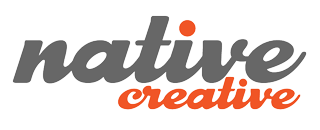Have you seen my new autumn collection?
Let’s be clear. Initially, I hated wearing protective face masks. My face sweats. My glasses fog. Anxiety rears its ugly head, perhaps because of my mild claustrophobia, but whatever the reason, masks were not my thing. You’d never even see me wearing a mask on Halloween.
However, I understand that these are exceptional times and wearing a mask is important in certain situations. Nobody wants to get or spread COVID-19. Thus, I am wearing a mask when the situation warrants it. And, actually, I have gotten used to it. In fact, I am a keen observer of “mask fashion.” Sneakers? Tired. Masks: Wired.
Find a mask that matches your outfit, your face, your hair, or all three. Get a mask with your favorite sports team or rock band’s logo (The Rolling Stones have a complete line up). Wear a mask that has a political statement. Rainbow? BLM? There’s a lot to choose from.
You can run, and you can hide
However, after watching people around Tokyo, I have started to wonder if for some folks wearing a mask is merely a way of being polite. That’s because, aside from folks just flouting the rules, I’ve been seeing all kinds of strange sights. People driving alone in cars with masks on. Two ladies, who were clearly casual friends, lowering their masks to have a chat in from of Lawsons, then parting and pulling their masks back up. People jogging or cycling all alone with masks on.
Why should I care about how other people wear their masks? Well, the biggest issue is that I don’t want to get COVID-19. So anytime someone on the Metro is using a mask as a chin strap, that’s a threat to my life. Also, as a resident of Japan, there’s a chance of being publicly shamed if you are not doing what everyone else is doing. Whether or not someone scolds you, the tension is there.
As a gaijin, I have gotten used to being stared at, but aside from blowing my nose, I try my best not to stand out in a bad way. I follow all the manner rules. I especially don’t want to be seen as someone whose behavior might endanger the health of others.
Listen carefully to the experts
According to experts in the field, there is very little chance of catching the virus outdoors, unless you stop and talk to someone, or heaven forbid someone sneezes or coughs right in your face. There is almost zero chance of catching or spreading it while cycling or running unless you are running in a tight pack, despite what NHK has suggested. Yet, you see people walking around in parks and on deserted streets wearing masks. Maybe they just don’t feel like taking their masks on and off. I can understand that.
On the other hand, I see people on public transport and other situations lowering their masks to talk. Coughing or sneezing into their masks but not covering their mouth. These are always people who appear like they should know better. Middle aged or older. Well dressed and likely well educated. What are they thinking? Better yet, are they thinking at all?
My advice. Wear a mask. Think about why you are wearing it. Try to keep your distance from anyone not wearing a mask. When you are wearing a mask, you STILL have to cover your mouth when you sneeze or cough. Like it or not, masks are here to stay. Now get your mask fashion up to speed, and avoid the ultimate fashion faux pas. Your life depends on it.

















